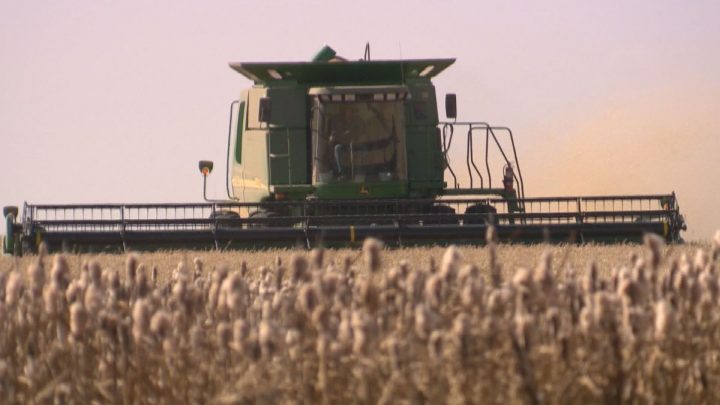For the period of Oct. 10 to Oct. 16, Saskatchewan’s harvest is almost complete as 98 per cent of the crops are in the bin.

According to the recent crop report, the dry conditions led to an early harvest for many and there were some concerns related to water quality and feed access for livestock.
“Once harvest began, producers in some areas were pleased to see yields better than expected,” the report read.
“In many cases, harvest progressed smoothly with little interruption. Now that harvest is complete, producers are hoping for rain to replenish soil moisture for next year.”
Crop yields in the southwest and west-central regions were below average due to sustained dry conditions, the report stated. But some reported yields were better than expected, but overall, the majority of crops yielded below the 10-year average.
“Winter wheat and hard-red spring wheat were the only crops above the 10-year averages,” the report read. “The largest impact on yields this year was drought, heat stress, gophers and grasshoppers.”
With crop estimates, hard-red spring wheat is estimated to yield 43 bushels per acre, durum 24 bushels per acre, oats 82 bushels per acre, barley 56 bushels per acre and fall rye 36 bushels per acre.
The report shows that flax is estimated to yield 18 bushels per acre, canola 33 bushels per acre and soybeans 17 bushels per acre. Field peas are estimated to yield 31 bushels per acre. Mustard is estimated to yield 636 lbs. per acre, lentils 1,101 lbs. per acre, canary seed 982 lbs. per acre and chickpeas 858 lbs. per acre.
The report states that fall rains and heavy, wet snow are needed around the province as soil moisture continued to decline throughout the fall.
“Provincially, cropland topsoil moisture is 31 per cent adequate, 44 per cent short and 25 per cent very short,” the report read. “Hay and pastures are 27 per cent adequate for moisture, 43 per cent are short and 29 per cent are very short.”
According to the report, producers were concerned about their winter feed supplies early in the growing season, where many have secured feed from other parts of the province or neighbouring provinces and now have adequate supplies. Hay and feed are mainly of good quality, as producers reported.
Despite the fall harvest nearing the end, work is still underway for many producers as they are applying fall fertilizer for next year and harrowing harvested crops.
“Livestock producers are hauling water for animals to ensure they have a safe water source, hauling feed and bringing cattle home for the winter,” the report read.
“Fall calving is occurring on some operations. Producers are planning for next year and hoping soil moisture improves to start next year’s growing season off well.”
The full report can be read on the Saskatchewan government website.




Comments